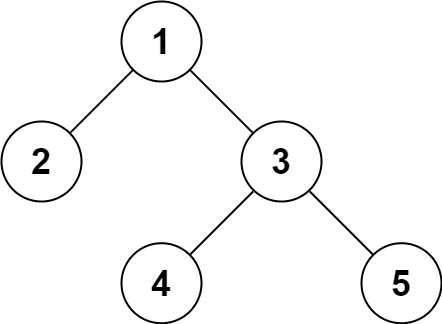

LeetCode: 297. Serialize and Deserialize Binary Tree
source link: https://mozillazg.com/2021/02/leetcode-297-serialize-and-deserialize-binary-tree.html
Go to the source link to view the article. You can view the picture content, updated content and better typesetting reading experience. If the link is broken, please click the button below to view the snapshot at that time.
题目¶
原题地址:https://leetcode.com/problems/serialize-and-deserialize-binary-tree/
Serialization is the process of converting a data structure or object into a sequence of bits so that it can be stored in a file or memory buffer, or transmitted across a network connection link to be reconstructed later in the same or another computer environment.
Design an algorithm to serialize and deserialize a binary tree. There is no restriction on how your serialization/deserialization algorithm should work. You just need to ensure that a binary tree can be serialized to a string and this string can be deserialized to the original tree structure.
Clarification: The input/output format is the same as how LeetCode serializes a binary tree . You do not necessarily need to follow this format, so please be creative and come up with different approaches yourself.
Example 1:

Input: root = [1,2,3,null,null,4,5] Output: [1,2,3,null,null,4,5]
Example 2:
Input: root = [] Output: []
Example 3:
Input: root = [1] Output: [1]
Example 4:
Input: root = [1,2] Output: [1,2]
Constraints:
- The number of nodes in the tree is in the range [0, 10^4].
- -1000 <= Node.val <= 1000
题目大意是,设计一个类实现序列化和反序列化一个二叉树的功能
解法¶
序列化,中序遍历将节点的值用空格分隔组成一个字符串,通过使用 N 标识空节点:
- [1,null,2] 将序列化为 1 N 2 N N
- [2,1,3] 将序列化为 2 1 N N 3 N N
- [5,3,6,2,4,null,7] 将序列化为 5 3 2 N N 4 N N 6 N 7 N N
反序列化,按空格读取字符串中包含的所有节点的值,然后基于读取处理的值列表重建二叉树: * 按照中序遍历的过程来重建二叉树 * 如果当前值是 N 说明是空节点 * 否则就是普通节点
这个思路的 Python 代码类似下面这样:
# Definition for a binary tree node.
# class TreeNode(object):
# def __init__(self, x):
# self.val = x
# self.left = None
# self.right = None
class Codec:
def serialize(self, root):
"""Encodes a tree to a single string."""
if root is None:
return 'N'
val = '{}'.format(root.val)
left = self.serialize(root.left)
right = self.serialize(root.right)
return '{} {} {}'.format(val, left, right)
def deserialize(self, data):
"""Decodes your encoded data to tree."""
values = data.split()
root = self._build_tree(values)
return root
def _build_tree(self, values):
if not values:
return None
next_value = values.pop(0)
if next_value == 'N':
return None
val = int(next_value)
root = TreeNode(val)
root.left = self._build_tree(values)
root.right = self._build_tree(values)
return root
# Your Codec object will be instantiated and called as such:
# ser = Codec()
# deser = Codec()
# ans = deser.deserialize(ser.serialize(root))
Recommend
About Joyk
Aggregate valuable and interesting links.
Joyk means Joy of geeK